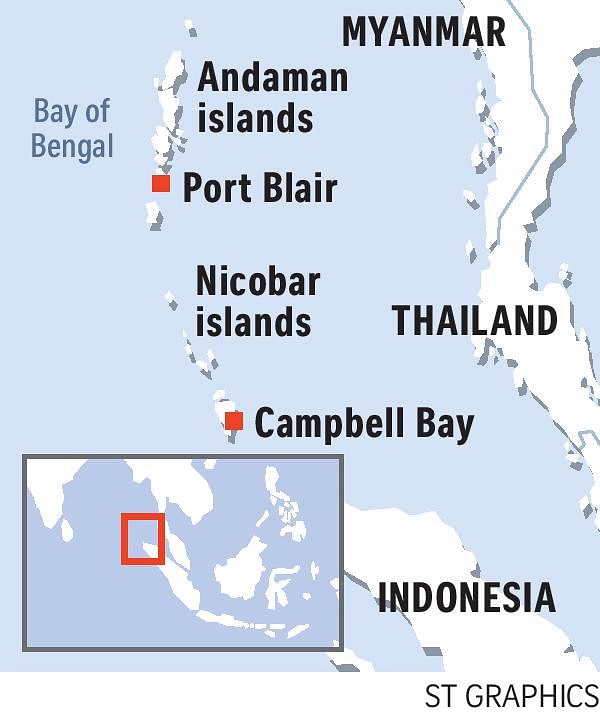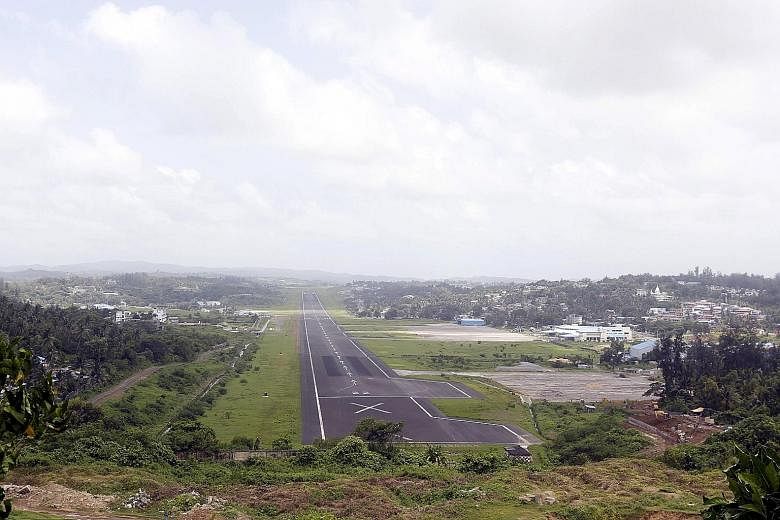PORT BLAIR (India) • One by one, the four Indian warships cruised into a sleepy harbour in the country's remote Andaman and Nicobar Islands, fresh from visiting South-east Asian capitals and conducting exercises in the disputed South China Sea.
The arrival of the warships at Port Blair, the archipelago's administrative hub, earlier this month symbolises how an island chain better known for its beaches and diving is quietly becoming a key plank in New Delhi's strategy to counter China's growing naval presence in the Indian Ocean.
Indian defence officials outlined plans to transform the modest military base into a strategic listening post with strengthened air force, navy and army capabilities.
While some of the officials noted that earlier expansion plans had largely faltered, they said there was fresh energy under Prime Minister Narendra Modi, who wants to reassert New Delhi's traditional dominance of the Indian Ocean.
All agreed the chain's location was its biggest asset in watching China's navy.

Scattered between the Bay of Bengal and the Andaman Sea, the Andaman and Nicobar Islands are closer to Myanmar and Indonesia than the Indian mainland. More importantly, its southern isles lie near the top of the Malacca Strait, a gateway to the Indian Ocean and through which China gets three-quarters of its oil.
"The world's busiest shipping lanes are just to the south," Lieutenant Governor A. K. Singh, a former military commander who runs the Andamans, said from his hill-top office in Port Blair, a one-time British penal colony.
"For too long we have had a fortress mentality about the islands, that they had to be defended. The time has come for us to start looking at these very strategically placed islands as a springboard for India," he added.
India has long had an uneasy relationship with China - a dispute over their Himalayan border led to war in 1962. More recently, New Delhi has worried about Chinese submarines venturing into the Indian Ocean.
China's Foreign Ministry rejected the notion that Chinese naval forays were behind any rise in Indian deployments. The Chinese Defence Ministry said Beijing cooperated with militaries around the region, including India's.
Nevertheless, India is building longer airstrips at the top and bottom of the Andaman and Nicobar chain, partly for long-range surveillance planes, defence officials said.
One is at Campbell Bay on Great Nicobar Island in the south, 240km from the mouth of the Strait of Malacca.
When that air base opened in 2012 with a runway of 1,060m, Chinese military commentators saw it as an offensive move.
The military plans to extend the runway to 1,828m by next year and then to 3,048m.
"Of all the plans, and some are grand, upgrading Campbell is the critical one. You can watch a lot of stuff from there," said a navy pilot in Port Blair who has knowledge of the plans.
India also expects the number of naval vessels based in the island chain to double to 32 before a targeted timeframe of 2022.
Those ships would initially comprise patrol boats, fast attack craft and amphibious landing ships, similar to vessels already here.
Frontline warships such as those that spent two months in and around the South China Sea would be stationed in the Andamans in the final phase of the 2022 plan.
The big naval gap is under water.
India has only 13 ageing diesel-electric submarines, compared to China's fleet of around 70 submarines, including nuclear-powered vessels.
On land, India is adding a second infantry brigade of around 3,000 troops to the Andamans over the next three years.
An Indian military official in Port Blair said that force levels needed to rise more quickly.
"But we are starting to make investments and we are stronger here than at any time," he said.
REUTERS

